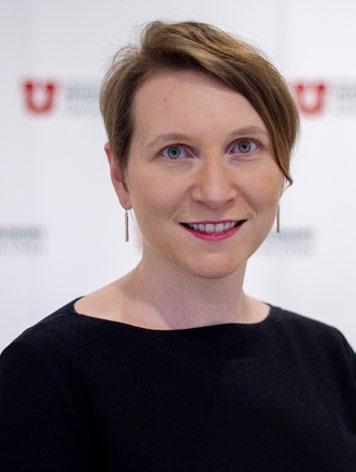
3 minute read
Alumni Profile: Paul Christian Physics and a Life in Nuclear Medicine
Paul Christian
Alumni Profile: Paul Christian
Physics and a Life in Nuclear Medicine
Growing up in Murray, Utah, Paul Christian
was inquisitive and had a desire to understand how things worked. “As a kid, I took apart alarm clocks, a toaster, a radio, and other devices,” he said. He also built his own crystal radio and then a transistor radio to understand the latest technology.
Christian’s favorite class at the U was the senior physics lab, where he and others performed amazing experiments and had to type up (no PCs back then) a formal report each week. “I learned a lot about experimental design and writing technical reports,” said Christian. He was also the undergraduate physics lab manager and lab-teaching assistant for the department. “It was a good experience,” he said. “I had to explain physics to the students, so I really had to understand concepts clearly.” His favorite physics professor was J. Irwin Swigart, who taught at the U from 1931-1987.
Early Days of Nuclear Medicine
Upon graduation from the U in 1971, Christian planned to attend graduate school but soon found himself recruited by the University of Utah’s Medical Center to develop the newly formed Division of Nuclear Medicine in Radiology. Nuclear medicine was experiencing rapid growth, with an explosion of other imaging technologies that would soon come into clinical use: ultrasound, CT and MRI.
“Physics has been a great background for medical imaging,” said Christian. “I’ve always felt fortunate to have entered the medical imaging field when I did.”
Early in his career at the University Medical Center, Christian realized there were no adequate textbooks to train imaging technologists, pharmacists, and physicians in nuclear medicine. Colleagues at other institutions invited him to co-author a textbook— Nuclear Medicine and PET/CT: Technology and Techniques. Thirty years and seven editions later, the book has long been considered the bible of nuclear medicine and PET imaging. Christian has also published more than 260 peer-reviewed scientific papers and abstracts and served as editor of the Journal of Nuclear Medicine Technology.
Making a Difference at Huntsman Cancer Institute
In 1999, Positron Emission Tomography (PET) and PET/CT technologies received reimbursement approval for imaging in cancer patients. The Huntsman Cancer Institute (HCI) had just opened, and Christian joined HCI to bring on the first PET scanner and create the cyclotron laboratory to produce positron-emitting radiotracers. He was also charged with seeing that the lab received approval from the Federal Drug Administration. PET imaging uses very short-lived radioactive tracers attached to chemicals that are picked up by cancer cells. These tracers have to be manufactured every day and undergo strict quality control procedures. Christian directed a team of physicists, chemists, and pharmacists to produce the radiotracers and distribute them daily to 18 hospitals and clinics throughout the Intermountain area. Christian also directed the imaging technologists who performed patient procedures and oversaw the scanner quality control and its use in research.
“I’m most proud of the work I did at Huntsman,” said Christian. “In creating the first PET scanner and the cyclotron lab to produce radiotracers in the Intermountain area, my team and I exceeded expectations in supplying radiotracers to hospitals and clinics in the area; bringing advanced cancer imaging to patients in our region.”
As part of his participation with professional societies and organizations, Christian developed a new PET scanner testing device to ensure that scanners provide accurate results. This device has been used in more than 100 cancer research centers worldwide to ensure that PET/CT scanners used in multi-center trials of new cancer drugs produce identical results.
Importance of Undergraduate Research
Christian believes in encouraging students to get involved in undergraduate research. “As I hired chemists for the cyclotron radiochemistry lab, I was impressed by the skills and critical thinking they had developed from doing undergraduate research,” he said. “These skills were helpful when they were asked to develop and implement new chemistry production and quality control studies.”
Christian enjoys traveling with his wife, Denise, as well as skiing, mountain biking, golfing, hiking, and spending time with his grown sons and their families.








